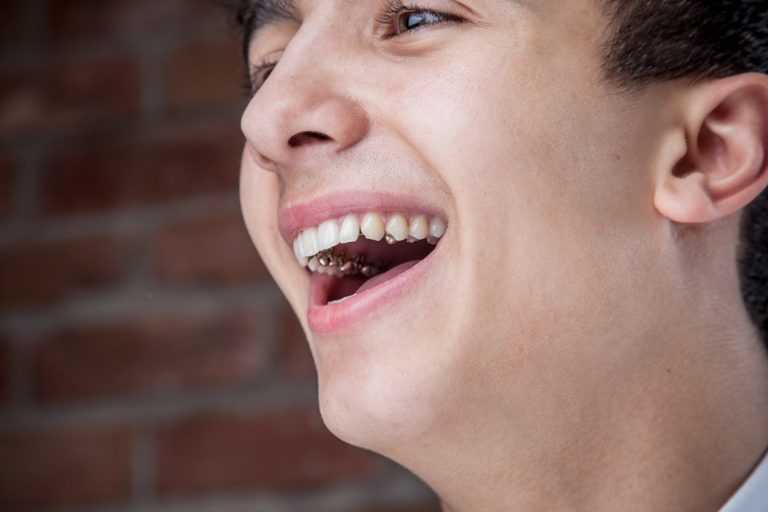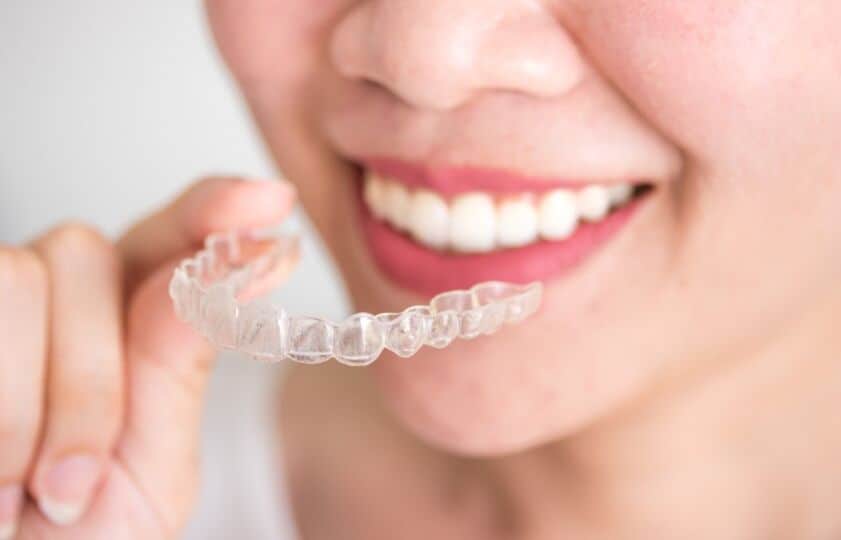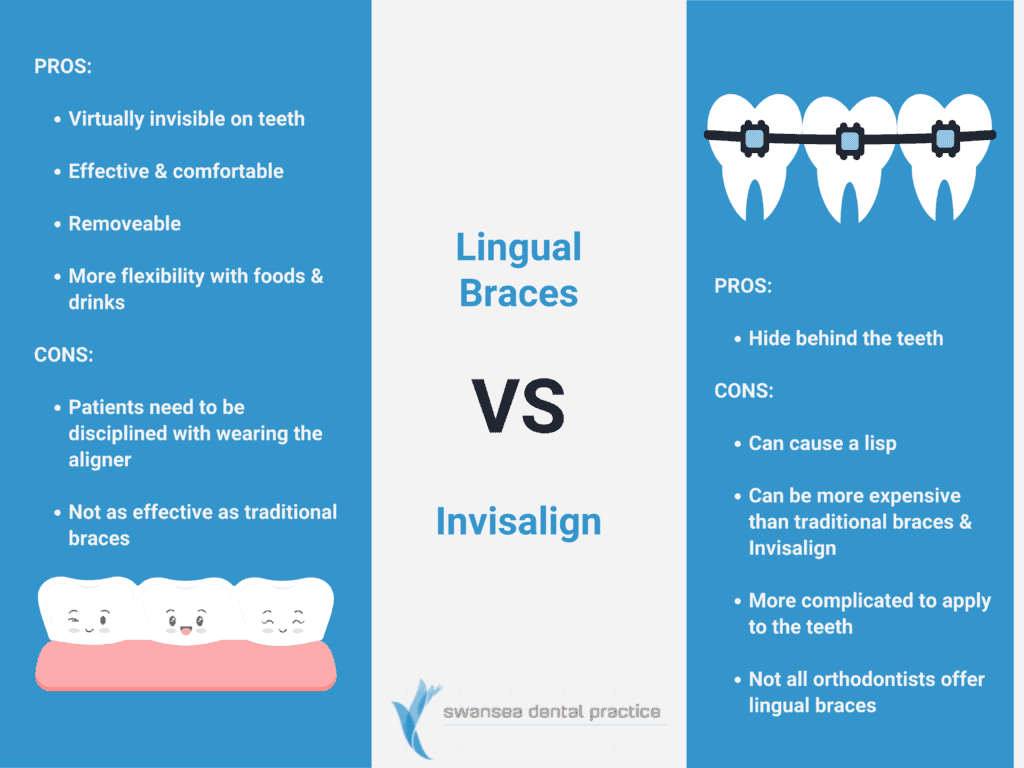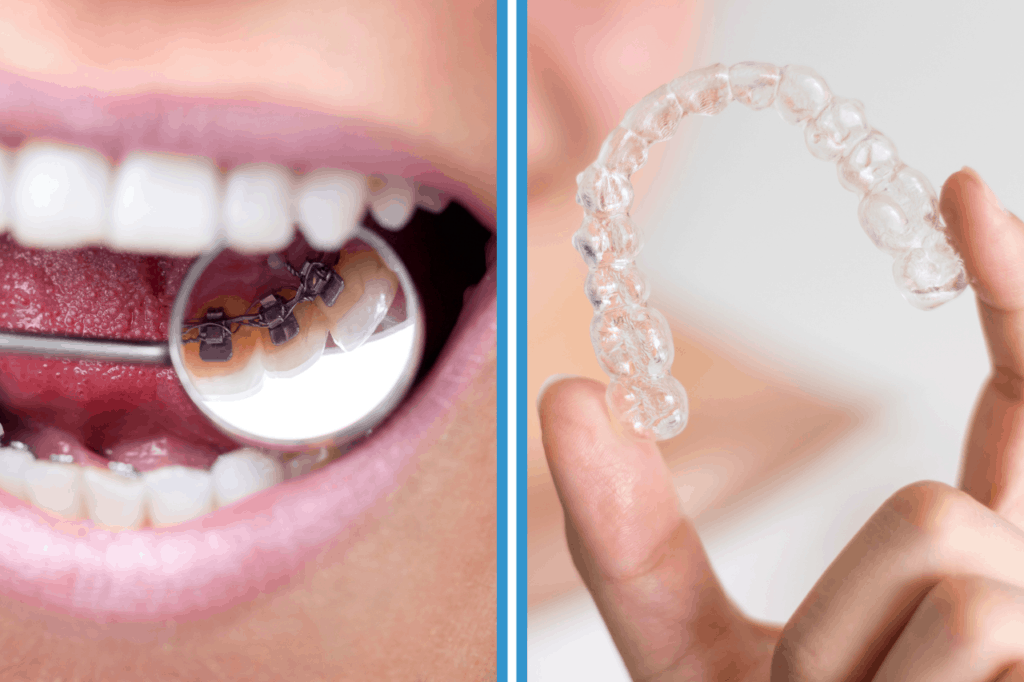Quite often, our patients shy away from the idea of traditional braces. Many patients want an inconspicuous way to straighten their teeth and correct their smile — one that blends into their appearance and doesn’t draw attention.
If you’ve been searching for an alternative to traditional braces, you may have come across Invisalign and lingual braces in your research. Both options are very discreet, one hiding behind the teeth and one being virtually invisible on the teeth.
The question is: what’s best for you?
In this article, we explain the difference between the two, then compare the pros and cons of lingual braces vs Invisalign so you can make an educated decision with your dentist about your treatment plan.
What are lingual braces?

Image: Sabka Dentists
Lingual braces have the same components as conventional braces (wires and brackets) but they are fixed to the back of your teeth, on the tongue or the side of the teeth. Because lingual braces are behind your teeth, they are nearly invisible, making them a great alternative for patients who don’t like the look of traditional braces.
To create lingual braces, your orthodontist will take an impression of your teeth and send it off to a laboratory where the brackets are designed to fit perfectly on the back of your teeth.
It is important to note that not all orthodontists are trained to apply lingual braces, or simply do not offer lingual braces. At Swansea Dental Practice, we do not do lingual braces as they are very complex to apply to the teeth.
What is Invisalign?

Image: Colgate
Invisalign treatment involves a series of clear plastic orthodontic aligners that gradually move your teeth into the correct position. These aligners are virtually invisible and can fix a wide range of common teeth-straightening and bite issues ranging from simple to complex.
Treatment starts with a consultation with your dentist. They will evaluate your smile and map out a precise digital treatment plan, showcasing the step-by-step transformation of your smile. Afterwards, your dentist will send impressions of your teeth to the Invisalign laboratory where multiple aligners will be custom made for you.
You are required to wear each set of aligners for 20 to 22 hours a day, changing to a new set of aligners every one or two weeks as directed by your dentist. Over time, any misaligned teeth will be gently moved into the correct position.
Invisalign is an incredibly popular option for patients who don’t want to commit to traditional braces, adult orthodontic patients and even professionals who want a more subtle option for work.
Lingual braces vs Invisalign: the pros and cons
Lingual braces and Invisalign are perfect for patients who dread the thought of traditional braces. Both options are discreet and allow you to maintain your everyday appearance, without the discomfort at the front of your teeth.
Now for the big question: lingual braces vs Invisalign. What’s best for you?
In short, Invisalign and lingual braces both have their pros and cons, and not all patients are suited to them. Here’s a quick rundown of the pros and cons of lingual braces vs braces.

| Lingual Braces | Invisalign | |
| Pros |
|
|
| Cons |
|
|
Talk to your dentist about what kind of treatment is best for you
Now that you have weighed up lingual braces vs Invisalign, it’s time to talk to your dentist about the best treatment option for your unique smile. While both options have a wide range of benefits, unfortunately, they are not suited to every smile.
At Swansea Dental Practice, we personally recommend Invisalign over lingual braces for our patients. However, our dentists are highly trained and knowledgeable and can provide recommendations around traditional braces and Invisalign alike.
To find out what option is best for you, book an appointment with our experienced dentists in Swansea NSW. We would be happy to examine your teeth and present tailored treatment options to help you achieve the smile you’ve always wanted. Get in touch to book today!

